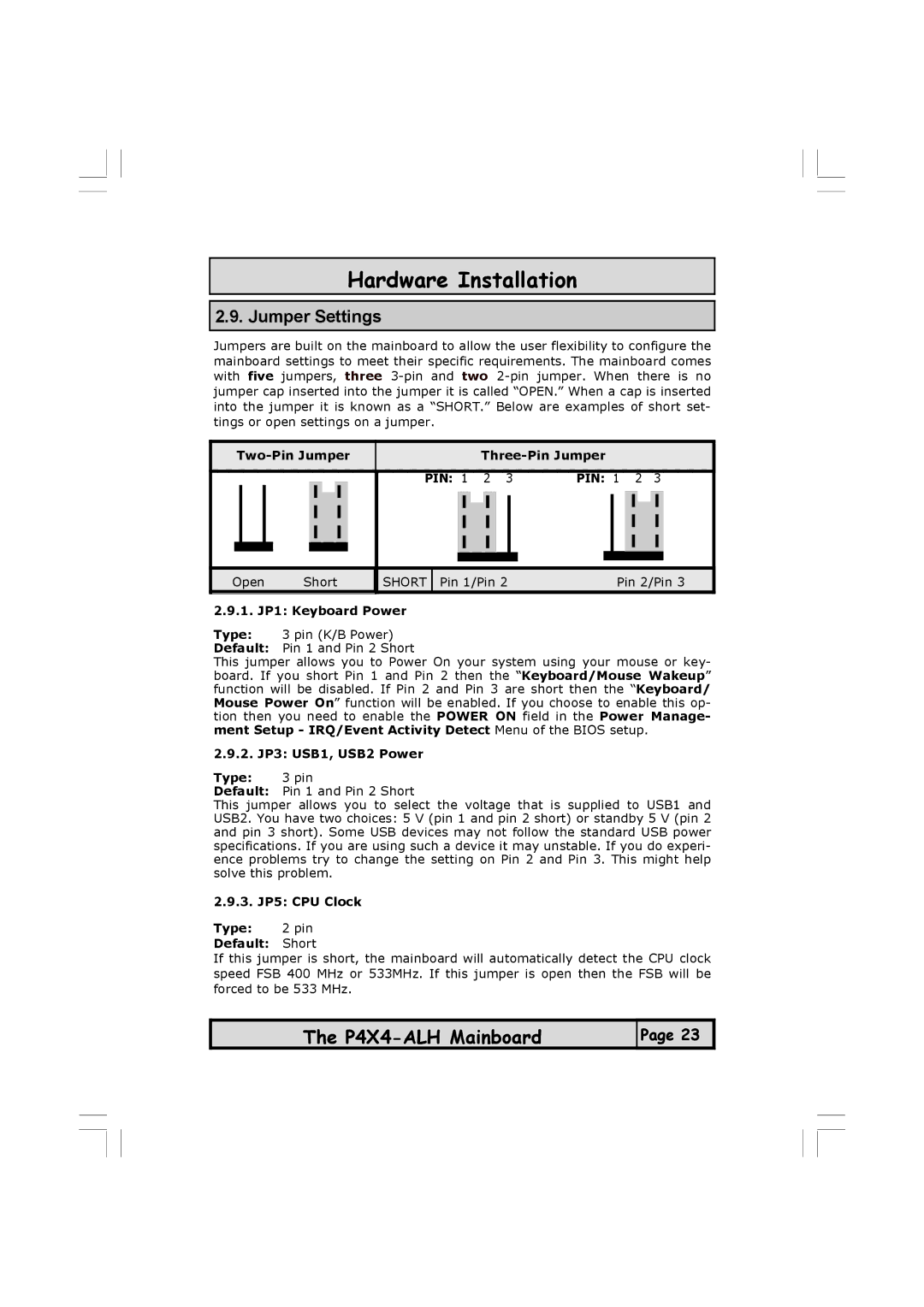
Hardware Installation
2.9. Jumper Settings
Jumpers are built on the mainboard to allow the user flexibility to configure the mainboard settings to meet their specific requirements. The mainboard comes with five jumpers, three
|
PIN: | 1 | 2 | 3 | PIN: | 1 | 2 | 3 |
Open | Short | SHORT | Pin 1/Pin 2 | Pin 2/Pin 3 |
2.9.1. JP1: Keyboard Power |
| |||
Type: | 3 pin (K/B Power) |
| ||
Default: Pin 1 and Pin 2 Short |
| |||
This jumper allows you to Power On your system using your mouse or key- board. If you short Pin 1 and Pin 2 then the “Keyboard/Mouse Wakeup” function will be disabled. If Pin 2 and Pin 3 are short then the “Keyboard/ Mouse Power On” function will be enabled. If you choose to enable this op- tion then you need to enable the POWER ON field in the Power Manage- ment Setup - IRQ/Event Activity Detect Menu of the BIOS setup.
2.9.2. JP3: USB1, USB2 Power
Type: 3 pin
Default: Pin 1 and Pin 2 Short
This jumper allows you to select the voltage that is supplied to USB1 and USB2. You have two choices: 5 V (pin 1 and pin 2 short) or standby 5 V (pin 2 and pin 3 short). Some USB devices may not follow the standard USB power specifications. If you are using such a device it may unstable. If you do experi- ence problems try to change the setting on Pin 2 and Pin 3. This might help solve this problem.
2.9.3. JP5: CPU Clock
Type: 2 pin
Default: Short
If this jumper is short, the mainboard will automatically detect the CPU clock speed FSB 400 MHz or 533MHz. If this jumper is open then the FSB will be forced to be 533 MHz.
The
Page 23
